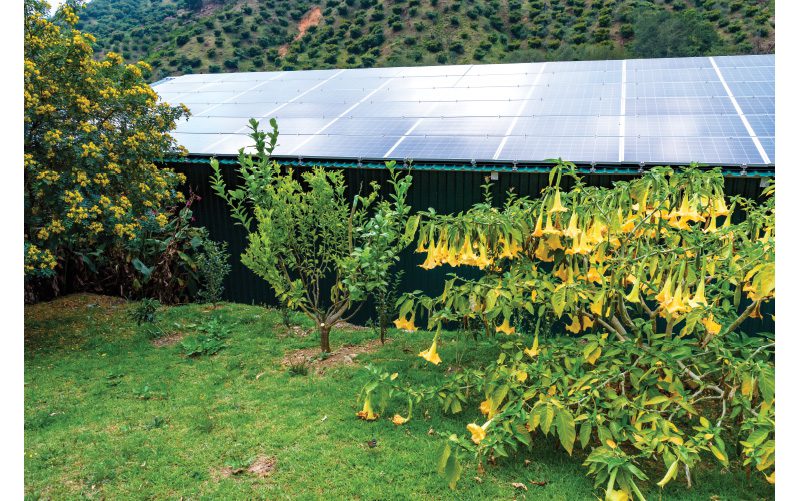
Eco-Friendly Flora Protect Our Fauna- “Bee” Kind to Vital Insects
Various eco-friendly aspects of building design and construction have been covered in past articles, most recently last month’s overview of home lighting options. The importance of replacing environmentally harmful incandescent light bulbs with energy-efficient, long-lasting LED and CFL light bulbs was emphasized. Other past articles have covered green building strategies that incorporate energy-efficient technology in home appliances and electrical installations. Air conditioners, for example, should consume less energy and not emit toxic gases that deplete the ozone layer.

Among the myriad considerations for building and living greener in Costa Rica, we encourage you to think beyond measures for conserving resources such as electricity and water. By applying some basic planet-protective principles to your home landscape, you can place your little piece of paradise into action. It’s a matter of making more thoughtful planting decisions for your property.
The need to embrace one
of our most threatened food chain
contributors cannot be underestimated.
Plant native tree species around your new dwelling — those that create shade so you, as well as other creatures, can enjoy. Spread your good will for a wider environmental reach. Plant trees not only on your own land, but wherever your travels lead. Whenever possible, dry out the seeds shed by your trees at home. Then during the rainy season, scatter them as you pass by open areas. No one will object to a wonderful tree that bears shade and possibly fruit. Our planet needs as many trees planted as possible.
Simply choosing native flower-bearing trees and bushes can make all the difference in creating safe spaces for bees to be able to pollinate and reproduce. Take it a step further — if you have sufficient land and space — and create your own beehives to produce honey as well as a safe haven for bees.

Talking about bees, the need to embrace one of our most threatened food chain contributors cannot be underestimated. This insect plays a vital pollen delivery role to sustain our food crops, and in turn, human survival, and should never be taken for granted. Yet, at a time when pesticides are depleting bee populations around the world, relatively little awareness of this extremely important issue is being promoted. Costa Rica is no exception. Here, neonoticotinoids (Bayer trade name Imidacloprid) are openly used as a pesticide on fields of cotton, rice, banana, sugarcane, melon, onions, citrus, oranges, potatoes, cereals, flowers and more. This compound has proven toxic properties that attack insects systemically and can live in the soil for up to nine years. In bees, it causes disorientation and eventually death. This pesticide was recently banned in the EU after scientific studies showed conclusively how damaging the impact is on bee populations.

On a related note — as always — conserve water. For landscape irrigation, use a drip system rather than a hose to water plants. Elsewhere in your home, never leave a water faucet running under any circumstance. Use plumbing fixtures that consume the minimum amount of water, and choose appliances with the same goal by checking specifications before you purchase. If you live in a coastal area and build a new pool, fill it with water imported from abundant resources without depleting the supply of treated water from a local aquifer.
Easy 40 piece puzzle to complete.
Click box in lower right to open in full screen.

Building Greener in Guanacaste
Picking the Right Windows
Swimming Pools, Design Construction and Maintenance
Know Before You Buy, The importance of Home inspection
From Dream to Reality
Picking your Dream Property
Storm Protection for Your Home
Roofing 101: Guanacaste Style
Guanacaste Tropical Hardwoods
Going with the flow: Rain Runoff and Erosion
Understanding Tico Plumbing
